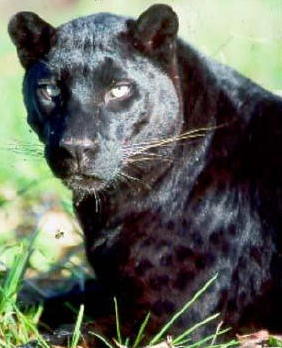Post by Melanie on Apr 19, 2012 14:39:21 GMT
Scientific Name: Pteropus aruensis
Species Authority: Peters, 1867
Common Name/s:
English – Aru Flying Fox
Taxonomic Notes: Often listed as a subspecies of melanopogon following Laurie and Hill (1954). Bergmans (2001) argued that aruensis should be considered distinct pending additional review of this complex. According to K. Helgen (pers. comm.) P. aruensis and P. keyensis are conspecific, but we retain P. aruensis here as a separate species pending resolution of this taxonomic confusion.
Assessment Information [top]
Red List Category & Criteria: Critically Endangered D ver 3.1
Year Published: 2008
Assessor/s: Helgen, K.
Reviewer/s: Hutson, A.M., Racey, P.A. (Chiroptera Red List Authority), Chanson, J. & Chiozza, F. (Global Mammal Assessment Team)
Justification:
Listed as Critically Endangered (Possibly Extinct), as it has not been recorded since the nineteenth century despite some surveys within its range, and it is quite a colourful and large bat. It may have been the target of hunting and may now be possibly extinct. There is one unconfirmed record of a bone from this species from 1992.
Geographic Range [top]
Range Description: This species is apparently restricted to the Aru Islands, Indonesia (Simmons 2005).
Countries:
Possibly extinct:
Indonesia
Range Map: Click here to open the map viewer and explore range.
Population [top]
Population: This species has not been collected since the nineteenth century. The complete absence of twentieth-century records for P. a. aruensis is concerning, and expeditions to the Aru Islands sponsored by the Western Australian Museum in the early 1990s did not encounter it. However, a single toothless jaw from a kitchen midden collected by P.A. Woolley at Namara on the island of Kobroor in October/November 1992 probably represents this species (field number NA/36, unregistered lot at CSIRO) (K. Helgen pers. comm.). It is a very large and colourful bat and so hence it is potentially a target of concerted hunting. It could possibly be extinct.
Population Trend: Unknown
Habitat and Ecology [top]
Habitat and Ecology: There is little information available about the ecology of this species.
Systems: Terrestrial
Threats [top]
Major Threat(s): The threats to this species are not known. This species is a potential target for hunting, and this may have resulted in the species decline, but this has not been confirmed.
Conservation Actions [top]
Conservation Actions: There are no conservation measures in place for this species. A proposed protected area (Pulau Kobroor) is within the general area where the species was found. Further studies are needed into the taxonomy, distribution, abundance, ecology, and threats of this species.
It is listed on CITES Appendix II.
www.iucnredlist.org/apps/redlist/details/136504/0
Species Authority: Peters, 1867
Common Name/s:
English – Aru Flying Fox
Taxonomic Notes: Often listed as a subspecies of melanopogon following Laurie and Hill (1954). Bergmans (2001) argued that aruensis should be considered distinct pending additional review of this complex. According to K. Helgen (pers. comm.) P. aruensis and P. keyensis are conspecific, but we retain P. aruensis here as a separate species pending resolution of this taxonomic confusion.
Assessment Information [top]
Red List Category & Criteria: Critically Endangered D ver 3.1
Year Published: 2008
Assessor/s: Helgen, K.
Reviewer/s: Hutson, A.M., Racey, P.A. (Chiroptera Red List Authority), Chanson, J. & Chiozza, F. (Global Mammal Assessment Team)
Justification:
Listed as Critically Endangered (Possibly Extinct), as it has not been recorded since the nineteenth century despite some surveys within its range, and it is quite a colourful and large bat. It may have been the target of hunting and may now be possibly extinct. There is one unconfirmed record of a bone from this species from 1992.
Geographic Range [top]
Range Description: This species is apparently restricted to the Aru Islands, Indonesia (Simmons 2005).
Countries:
Possibly extinct:
Indonesia
Range Map: Click here to open the map viewer and explore range.
Population [top]
Population: This species has not been collected since the nineteenth century. The complete absence of twentieth-century records for P. a. aruensis is concerning, and expeditions to the Aru Islands sponsored by the Western Australian Museum in the early 1990s did not encounter it. However, a single toothless jaw from a kitchen midden collected by P.A. Woolley at Namara on the island of Kobroor in October/November 1992 probably represents this species (field number NA/36, unregistered lot at CSIRO) (K. Helgen pers. comm.). It is a very large and colourful bat and so hence it is potentially a target of concerted hunting. It could possibly be extinct.
Population Trend: Unknown
Habitat and Ecology [top]
Habitat and Ecology: There is little information available about the ecology of this species.
Systems: Terrestrial
Threats [top]
Major Threat(s): The threats to this species are not known. This species is a potential target for hunting, and this may have resulted in the species decline, but this has not been confirmed.
Conservation Actions [top]
Conservation Actions: There are no conservation measures in place for this species. A proposed protected area (Pulau Kobroor) is within the general area where the species was found. Further studies are needed into the taxonomy, distribution, abundance, ecology, and threats of this species.
It is listed on CITES Appendix II.
www.iucnredlist.org/apps/redlist/details/136504/0




